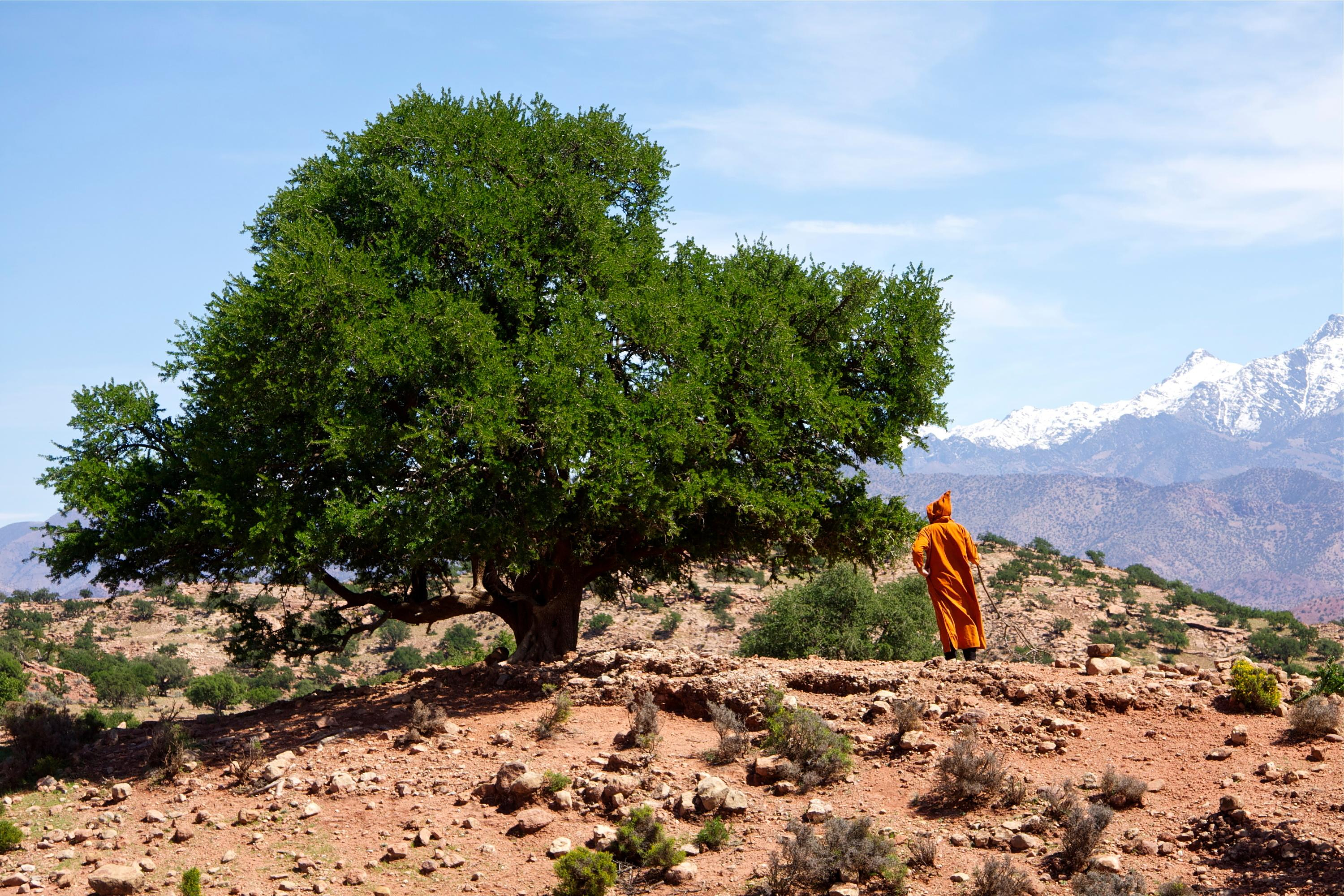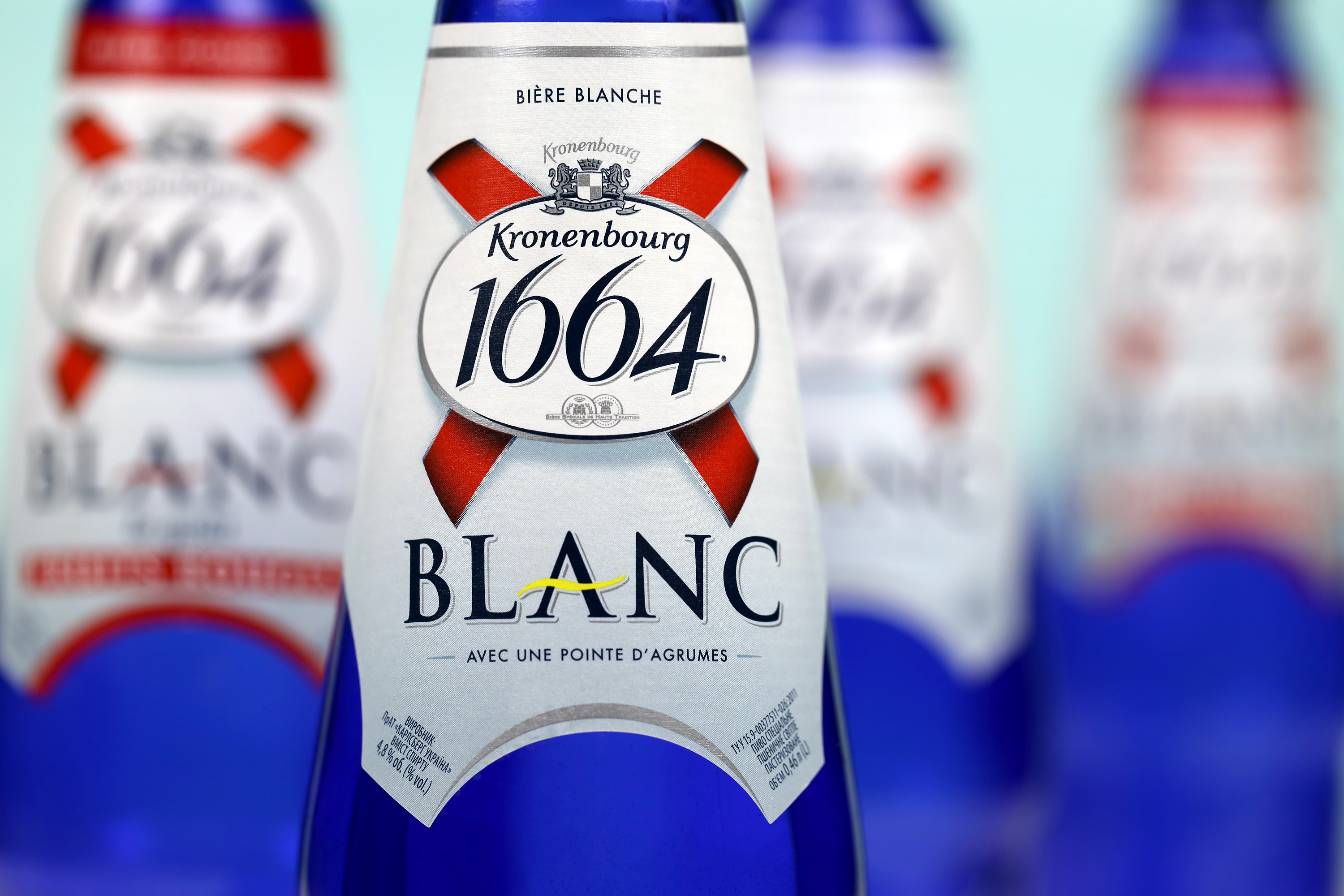With a tropical twist, so to speak, places in different parts of the world are attempting to fortify their shores threatened by storms and waves. From Boston, Massachusetts, to the islands of Indonesia, coconut fiber is used in coastal defense projects, often in conjunction with other efforts. Coconut bast, which is also used in front door mats for cleaning shoes, is easy to get and a sustainable and inexpensive option.
This is especially true in developing countries, but the material is also popular in more affluent countries, where it is understood as a significant part of so-called living coastlines – with natural elements for attachment instead of hard barriers made of wood, steel or concrete.
One such project is currently underway in Neptune, New Jersey, on a stretch of the Shark River about a mile from the Atlantic. It's being run by the American Littoral Society, a coastal defense organization that — with the help of federal grants and local funds — repairs damage to the shoreline caused by Superstorm Sandy in 2012. As part of the $1.3 million project, the group has already managed to reattach Strand where it was eaten away.
"Whenever we can, we turn to natural-based solutions," says Tim Dillingham, the leader of the organization. The coconut bast is also relatively cheap compared to harder materials.
The fibers come from the shells, are woven into mats or blocks, often held together with netting. Thanks to its flexibility, the material can be easily adjusted to suit uneven coastal areas and then secured with wooden pegs. It biodegrades over time, that's how it's supposed to be. But before that happens, sometimes shore-friendly plants or grasses have been sown or placed in holes that can be drilled into the fiber blocks.
The bast fabric holds the plants while they take root and grow. Then, when the fibers eventually decay, the plants and sediments around them are left behind—and fortify the shoreline.
In Boston, Julia Hopkins, an assistant professor at Northeastern University, uses coconut fiber, wood chips and other materials to make floating mats. They are designed to block the power of the waves and promote the growth of aquatic vegetation.
Four such mats are installed in waterways around Boston as part of a pilot project. Hopkins envisions a network of hundreds or even thousands of them to protect larger areas. She points out that coir is often thrown away as a waste product. It is therefore practically a matter of recycling.
Projects involving coconut bast have already taken place in several other US states. In 2021, for example, around 730 meters of coastline on Jamaica Bay in New York, which had also been eroded by storm Sandy, was fortified with the help of coconut fiber blocks, among other things. In Austin, Texas, a section of the shore of Lake Austin was stabilized and the results were closely monitored for five years, from 2009 to 2014. Erosion decreased and the healthy growth of native plants at the water's edge increased.
Indonesia is the largest coconut producer in the world, producing more than 17 million tons in 2021, for example. In 2018, scientists from the Bandung Institute of Technology used coconut fibers in the construction of a dam to protect a village. Residents on an island in Senegal use wooden structures and coconut palm fronds and sticks to reclaim eroded parts of the beach.
But it doesn't always work. In 2016, for example, coconut bast was installed on a heavily corroded salt marsh on the island of Martha's Vineyard (Massachusetts). It helped reduce erosion for a while, but the fibers didn't last long due to heavy swell.
"We had them for a couple of years and then decided not to install new ones," says Suzan Bellincampi, director of the Felix Neck Wildlife Refuge, a protected area in Edgartown that oversaw the project. "It's not for every place, it works in some places, not in all places."
Coconut fiber mats and blocks were also recently used on Chapel Island in Nova Scotia, Canada, but were damaged by inclement weather.
The success of the project in New Jersey is unmistakable. Trucked sand has combined with naturally accumulated sediments to create a beach that is significantly wider than what was before. "There are now hibernating fiddler crabs under your feet," says Al Modjeski, a rehabilitation specialist with the Littoral Society. "They (the animals) will be excited about this new habitat."
"Aha! Ten minutes of everyday knowledge" is WELT's knowledge podcast. Every Tuesday and Thursday we answer everyday questions from the field of science. Subscribe to the podcast on Spotify, Apple Podcasts, Deezer, Amazon Music, among others, or directly via RSS feed.

 New York: at Columbia University, the anti-Semitic drift of pro-Palestinian demonstrations
New York: at Columbia University, the anti-Semitic drift of pro-Palestinian demonstrations What is Akila, the mission in which the Charles de Gaulle is participating under NATO command?
What is Akila, the mission in which the Charles de Gaulle is participating under NATO command? Lawyer, banker, teacher: who are the 12 members of the jury in Donald Trump's trial?
Lawyer, banker, teacher: who are the 12 members of the jury in Donald Trump's trial? After 13 years of mission and seven successive leaders, the UN at an impasse in Libya
After 13 years of mission and seven successive leaders, the UN at an impasse in Libya What High Blood Pressure Does to Your Body (And Why It Should Be Treated)
What High Blood Pressure Does to Your Body (And Why It Should Be Treated) Vaccination in France has progressed in 2023, rejoices Public Health France
Vaccination in France has progressed in 2023, rejoices Public Health France Food additives suspected of promoting cardiovascular diseases
Food additives suspected of promoting cardiovascular diseases “Even morphine doesn’t work”: Léane, 17, victim of the adverse effects of an antibiotic
“Even morphine doesn’t work”: Léane, 17, victim of the adverse effects of an antibiotic Unemployment insurance: tightening of the rules on July 1
Unemployment insurance: tightening of the rules on July 1 Cancers, chronic diseases... Billions of workers hit by climate change, warns the UN
Cancers, chronic diseases... Billions of workers hit by climate change, warns the UN Closure of the A13 extended until at least mid-week
Closure of the A13 extended until at least mid-week Closure of the A13: Pécresse “asks the State to take charge of making the A14 free”
Closure of the A13: Pécresse “asks the State to take charge of making the A14 free” The series adaptation of One Hundred Years of Solitude promises to be faithful to the novel by Gabriel Garcia Marquez
The series adaptation of One Hundred Years of Solitude promises to be faithful to the novel by Gabriel Garcia Marquez Racism in France: comedian Ahmed Sylla apologizes for “having minimized this problem”
Racism in France: comedian Ahmed Sylla apologizes for “having minimized this problem” Mohammad Rasoulof and Michel Hazanavicius in competition at the Cannes Film Festival
Mohammad Rasoulof and Michel Hazanavicius in competition at the Cannes Film Festival UK lends Ghana treasures stolen during colonization
UK lends Ghana treasures stolen during colonization Skoda Kodiaq 2024: a 'beast' plug-in hybrid SUV
Skoda Kodiaq 2024: a 'beast' plug-in hybrid SUV Tesla launches a new Model Y with 600 km of autonomy at a "more accessible price"
Tesla launches a new Model Y with 600 km of autonomy at a "more accessible price" The 10 best-selling cars in March 2024 in Spain: sales fall due to Easter
The 10 best-selling cars in March 2024 in Spain: sales fall due to Easter A private jet company buys more than 100 flying cars
A private jet company buys more than 100 flying cars This is how housing prices have changed in Spain in the last decade
This is how housing prices have changed in Spain in the last decade The home mortgage firm drops 10% in January and interest soars to 3.46%
The home mortgage firm drops 10% in January and interest soars to 3.46% The jewel of the Rocío de Nagüeles urbanization: a dream villa in Marbella
The jewel of the Rocío de Nagüeles urbanization: a dream villa in Marbella Rental prices grow by 7.3% in February: where does it go up and where does it go down?
Rental prices grow by 7.3% in February: where does it go up and where does it go down? Europeans: “All those who claim that we don’t need Europe are liars”, criticizes Bayrou
Europeans: “All those who claim that we don’t need Europe are liars”, criticizes Bayrou With the promise of a “real burst of authority”, Gabriel Attal provokes the ire of the opposition
With the promise of a “real burst of authority”, Gabriel Attal provokes the ire of the opposition Europeans: the schedule of debates to follow between now and June 9
Europeans: the schedule of debates to follow between now and June 9 Europeans: “In France, there is a left and there is a right,” assures Bellamy
Europeans: “In France, there is a left and there is a right,” assures Bellamy These French cities that will boycott the World Cup in Qatar
These French cities that will boycott the World Cup in Qatar Basketball (F): big winner of Asvel, Basket Landes will face Tarbes in the semi-final of the League
Basketball (F): big winner of Asvel, Basket Landes will face Tarbes in the semi-final of the League Football: Yazici (Lille) “in shock” after an attempted theft at his home
Football: Yazici (Lille) “in shock” after an attempted theft at his home Serie A: victorious over AC Milan, Inter crowned Italian champions for the 20th time
Serie A: victorious over AC Milan, Inter crowned Italian champions for the 20th time Serie A: “Winning a title in a derby has never happened,” relishes Martinez after Inter’s coronation
Serie A: “Winning a title in a derby has never happened,” relishes Martinez after Inter’s coronation


















